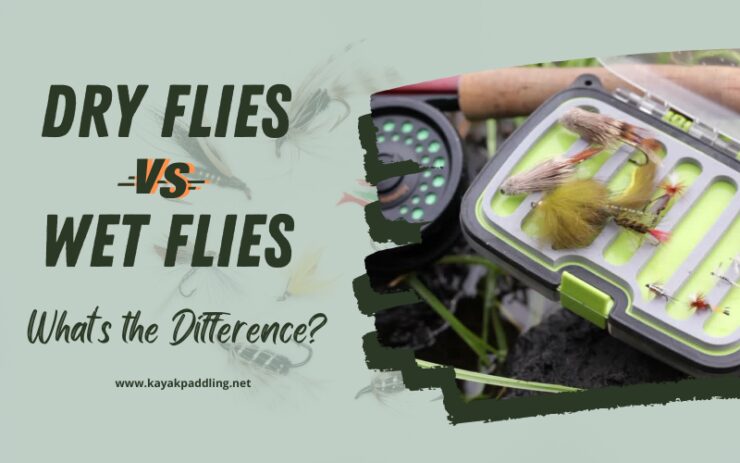Fly fishing is often considered the most elegant way to catch fish. The art of fly fishing requires no equipment apart from a rod and reel, but if you want to get serious about it you will probably need some specialized gear that can be costly.
Fly fishing is the sport of catching fish with artificial flies as lures on a long, flexible rod and a line. A special kind of float-fishing for trout in rivers was already mentioned by Homer in ancient Greece while ancient Egypt used barbed hooks made from bone and wood. From ancient records, we know that people have been fly fishing for more than 2,000 years which makes it one of man’s oldest sports known today.
Once coined ‘gentleman’s fishing’, fly fishing has evolved into a competitive sport with more than one hundred years of history. Fly fishing is very popular worldwide, including in North America, Europe, Asia, South Africa, and Australia. For many anglers, it’s about the challenge of trying to catch fish using an artificial fly that imitates their prey exactly or just being out there on the water.
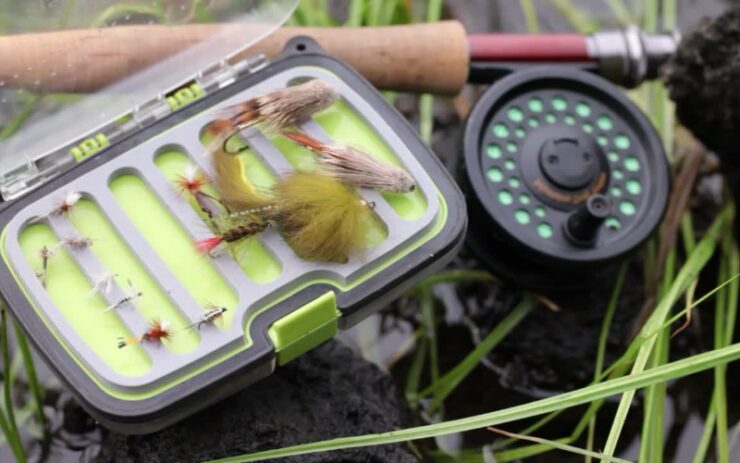
The equipment used by fly fishermen varies greatly depending on time and place as well as what type of fish they are attempting to capture. Many ancient devices were made from organic materials such as wood and animal parts like feathers.
To this day some people will use pre-made artificial flies tied specifically for catching certain species while others prefer to tie their own custom-made flies which can take a lot of time and patience
Modern fly fishing is all about building a large and diverse fly box. With the availability of materials, the number of available patterns has exploded over time.
Flies have been divided into numerous categories including dry flies, wet flies, nymphs, emergers, terrestrials, and streamers.
The reason many anglers fish wet flies is because trout love eating them! You will find no fly fishing enthusiast who can argue against the success of fishing a wet fly to rising trout or actively feeding fish. By using a weighted fly that suspends just under the surface, you can imitate a lot of different insects and crustaceans.
Wet flies and dry flies sound like they would be different species of fish, but both are actually types of fly fishing lures.
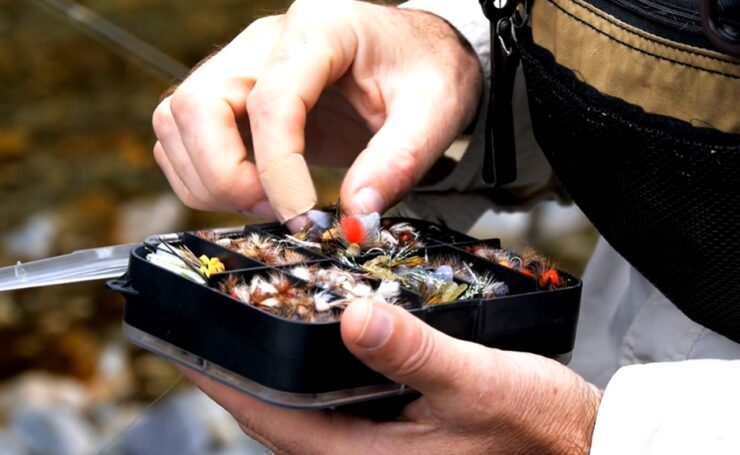
First, the method: Fly fishing is a way for anglers to catch fish with a low-impact tool. By using a line, rod and a lure that imitates something a fish might eat naturally – a wet fly looks like an insect on the water’s surface or a grasshopper hitting the water by accident–the hope is that you’ll catch some dinner.
A dry fly is basically the same thing as a wet fly, but it floats on top of the water instead of sinking to the bottom. And some wet flies float no matter what due to extra weighting used in construction.
The difference between wet flies and dry flies is that fly fishing with a wet fly is about as natural as it gets: the angler wants to mimic what a fish would eat in nature as closely as possible. You cast upstream and across, giving the lure time to sink before the downstream retrieve–the same way you’d fish for any other fish.
A dry fly, on the other hand, floats on top of the water and mimics an insect landing there by accident. It’s not dropped from above like a stick or log so you can cast up or downstream at your whim. A good cast will get your line out ahead of where you think a fish might be, hopefully luring one into biting even if he was contemplating another route of escape.
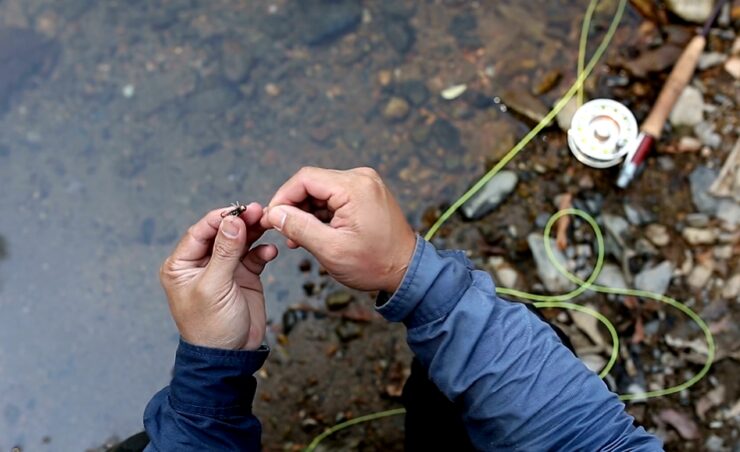
However, if there’s any flow at all it can be difficult to present a dry fly as naturally as one would like, so generally, it’s only recommended for still ponds. If you’re fishing in moving water and want to use a dry fly you’ll need to add some weight to it – a strike indicator–so that the fish know where the lure is and don’t think it just “drifted” into their territory.
As with other primitive methods of fishing such as with a spear or bow and arrow, fly fishing is more about strategy than brute strength. The fish might be bigger and faster than you at least when it comes to swimming, but the advantage that we have is that we’re smarter and can adapt. You just need to learn some of the tricks of the trade – when to use which lure for example – and do your best to outsmart them with what nature gave you.
Wet flies are more commonly used on their own without any additional weighting while dry flies usually come weighted so they’ll land where you want them to. This isn’t always the case though: sometimes an angler will cut off part of a grasshopper and attach it as a tail on the end of his line for an imitation of a grasshopper sinking to the bottom. This is called a hopper dropper rig and it can be very effective during dry fly season when adult insects are hatching off the water.
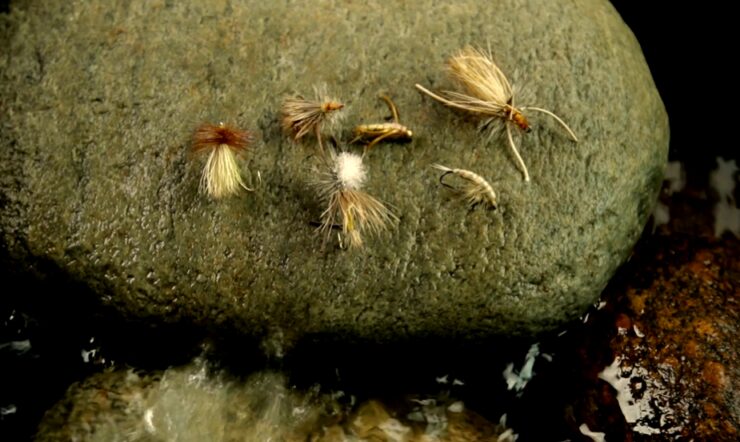
Generally, this means adding some kind of weight or even making one out of lead wire. While most anglers will have their preference, wet fly fishing is just as legitimate as dry fly fishing–and maybe more so since you’re trying harder to emulate your prey in its natural environment. It’s just a matter of personal preference.
To summarize, fly fishing is an effective way to get dinner if it can be done properly. A wet fly works best when the water is calm or slightly rippled whereas a dry fly works best on flat waters with no current.
Wet flies are heavy enough to sink where they land while dry flies are designed with extra features to keep them floating regardless of what’s going on below. As with any other primitive methods of fishing, it’s more about strategy than brute strength and whether or not you’ll catch anything has less to do with your skill level and more to do with how smart you use what nature gave you. Now that you have some knowledge of flies, we wish you happy fishing.
Adelaide Gentry, a seasoned kayaking enthusiast and expert, is the driving force behind KayakPaddling.net. With over a decade of experience navigating the world’s most challenging waterways, Adelaide combines her passion for adventure with a deep knowledge of kayaking to provide insightful and practical guidance for paddlers of all levels.
Related Posts:
- Heavy Duty Fishing: 11 Best Rods And Reels For Big Fish 2024
- 12 Best Fishing Lures Ever 2024 - Baits That…
- 16 Best Kayak For Beginners 2024 - Kayaking Adventure Gear
- 10 Best Saltwater Fishing Boats - Ultimate Angling Adventure
- 10 Best Fishing Reel for Salmon 2024 - Reels for Big Gamers
- 12 Best Motorized Kayak 2024 - Start Your Aquatic Adventure!

